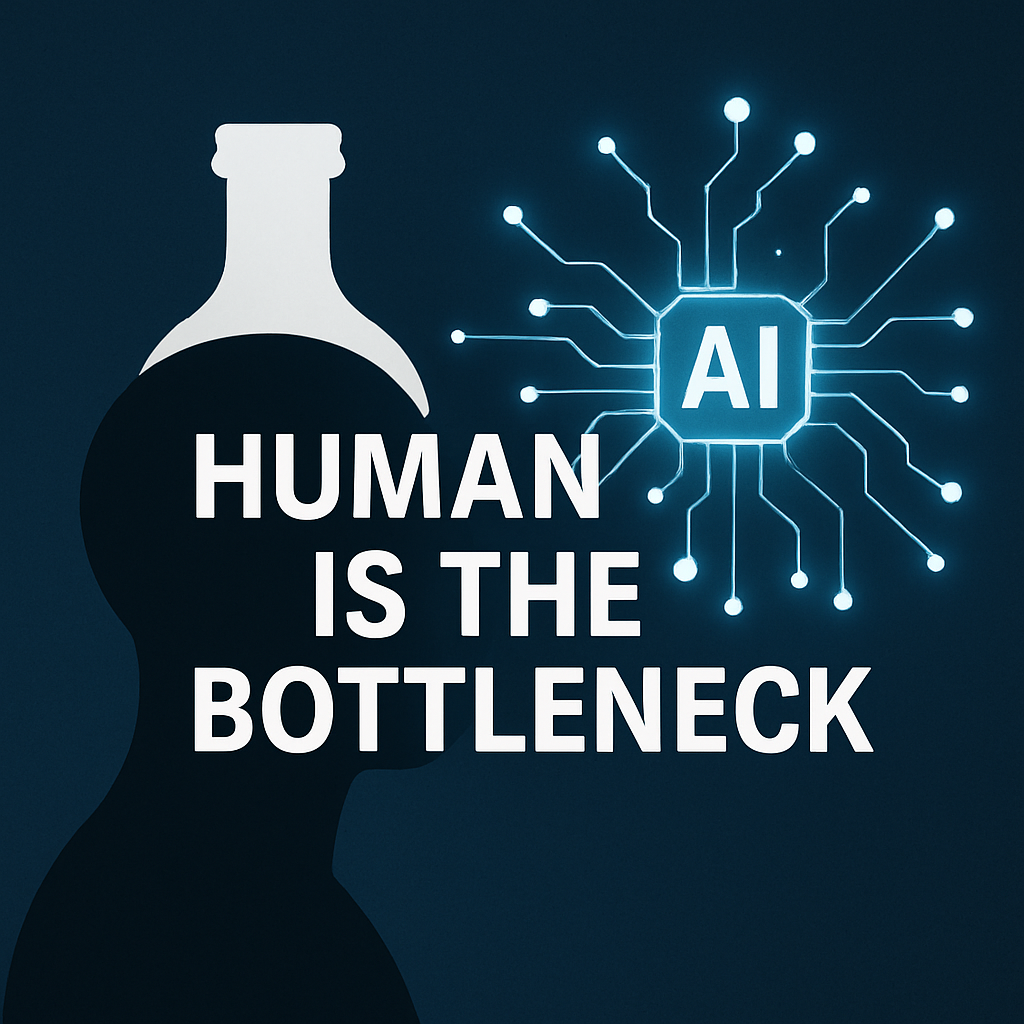
Bridging the Human-AI Speed Divide: Overcoming the Bottlenecks to True Automation
One of the central challenges in the age of AI is the profound speed mismatch between human oversight and artificial intelligence. While an AI can process information and execute tasks at speeds potentially millions of times faster than we can, its progress is often tethered to the much slower pace of human intervention. Because AI systems ultimately serve human goals, they frequently require our approval or input to make decisions. This dynamic creates a significant bottleneck and raises a critical question: How can we adapt to collaborate effectively in the fast-paced world of AI?
If we want to unlock the full potential of AI, we must enable it to operate automatically in seamless, end-to-end workflows. However, in our current setting, two fundamental issues stand in the way.
First, there is the feedback loop problem. An AI often lacks a complete, real-time understanding of its environment. After executing a task, it cannot independently perceive the outcome. It falls to a human operator to bridge this gap by providing this feedback—whether by verifying a result on a website, providing a screenshot, or querying a database. This manual step fundamentally disrupts the AI’s speed and hinders true automation.
Second, we face a communication and context gap. AI struggles to grasp the nuances, implicit goals, and unstated assumptions behind our requests. We, in turn, are often unaware of the specific ambiguities or missing information the AI is encountering. This communication disconnect forces the AI into a difficult choice: either guess our intent, which risks errors, or pause the process to ask for human clarification, which defeats the purpose of its speed.
Looking ahead, solving these two core problems is the key to unlocking the next era of productivity. The goal is not for humans to somehow "move as fast as AI," but to design systems where the friction of human intervention is minimized. By creating AI that can independently perceive its environment and more accurately infer human intent, we can enable truly autonomous workflows. This will allow us to scale our collective intelligence and achieve outcomes at a pace previously unimaginable.